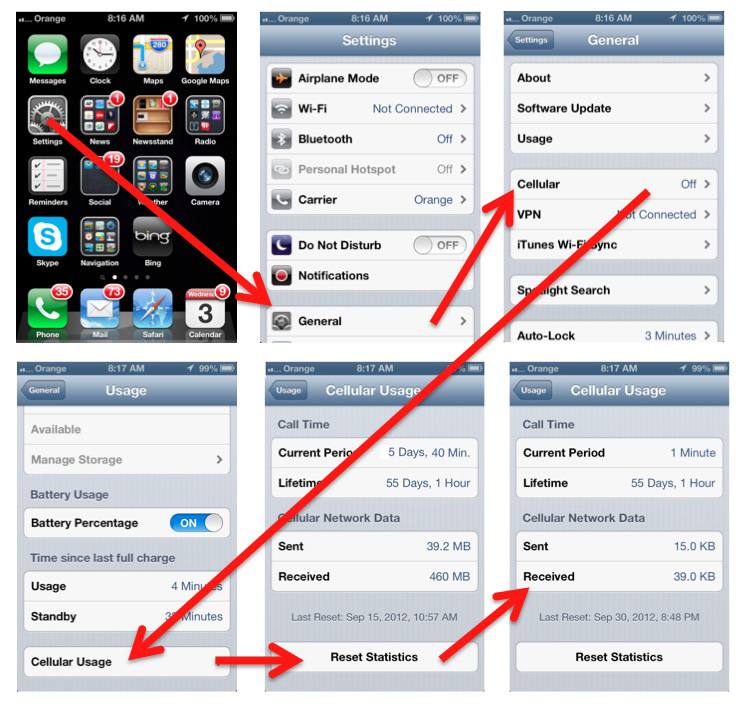Cataracts for Customers
Let’s say you have an iPhone, and your carrier is AT&T.* That puts you deep inside what Scott Adams (of Dilbert fame) calls a confusopoly (and illustrates here). His text explanation:
A confusopoly is a situation in which companies pretend to compete on price, service, and features but in fact they are just trying to confuse customers so no one can do comparison shopping.
Cell [mobile] phone companies are the best example of confusopolies. The average consumer finds it impossible to decipher which carrier has the best deal, so carriers don’t have normal market pressure to lower prices. It’s a virtual cartel without the illegal part.
Now let’s just take data (and leave text and voice charges aside). Whether you choose the mobile share or the individual plan, you’re certain to pay for more than you use, unless you work carefully to use exactly 300Mb, 3Gb, 5Gb or whatever you guessed you’d use when you set the plan up in the first place.
But how can you know exactly what you’ve used? Well, by doing this:

You go into settings, hit General, then Cellular, then Cellular Usage (be sure to scroll down, because it’s off the screen), then Reset Statistics. But first you’ll want to freeze the prior total by taking a screen shot. You do this by pressing the round button in the front and the rectangular one on the top, at exactly the same time. Since resetting causes the phone to forget all prior data usage, you’ll need to save the screen shots so you can track that usage, by eyeball (since you don’t have the data, just a snapshot), and do all this repeatedly, over time. Not easy. (For example, I missed screen-shooting the middle bottom one in the example above, so I created a new one just to illustrate how disadvantaged your ability to track usage actually is.
Usually you don’t need to pay much attention, especially if you’ve got a data plan in the GB rather than the MB range. But you need to do this often if you leave the country and need to get on the Internet. Because, according to AT&T’s Affordable World Packages page, every KB will cost you $0.0150 in Canada and $0.0195 in the rest of the world. Since there are 1000KB in a MB, and 1000MB in a GB, we’re talking $15/MB and $15,000/GB in Canada and $19.50/MB and $19,500.00/GB elsewhere. This kind of non-plan tends to cause “bill shock.” In many cases, shock is an understatement. (Here’s a report on my own run-in with Sprint several years back.)
So instead you go for one of the “affordable” plans, which look like this:
The overage in each case is $30/120MB, which is 25¢/MB, or $250/GB, which is 25x the overage AT&T charges on its 3GB and 5GB domestic plans for individuals.
Confused? Of course. The whole system is partially opaque, like a cataract, or frosted glass. On purpose. This whole thing is designed so the phone company’s billing system knows constantly what’s going on while you don’t. Knowledge, by intent, is highly asymmetrical. That way they win and you lose — while thinking you’re winning because you’ve picked the “best” plan, and have avoided getting a $10,000 bill after making the mistake of watching a movie over a cell connection in London when you thought you were on the hotel wi-fi. (Easy to do. The only thing that looks different while you’re watching is a tiny wi-fi symbol at the top of the screen, which you won’t see if you’re watching the movie in landscape mode.)
Yes, AT&T does send little text warnings when you land in another country, and notifies you as well when you hit an overage threshold, at least stateside. (I dunno about overseas.) But they still hold nearly all the cards, while all you’ve got is guesswork up front and a labyrinth of screens to spelunk through just to see where you stand, cringing every time you go there, in fear that maybe you didn’t set things right in the first place, or that you forgot to turn off cellular data (steps 1-3, above) when you left your hotel room’s wi-fi zone.
This actually sucks for the phone companies as well as for their customers. That’s because customers are a company’s nerve endings in the marketplace. If a company has a genuine and respectful relationship with customers, those customers send clear and strong signals reporting on what’s actually happening in the marketplace. Company and customer see clearly together, rather than with one clear and one half-blind eye.
Mobile phone companies don’t have to suck. A good case in point is Ting, an independent mobile phone company operating here in the U.S. With Ting, you pay only for what you use. They do publish plans, but they do that only because plans are what people are used to. Beyond that it couldn’t be more simple. Each month you are either credited for what you didn’t use, or charged for what you did, if you went over your planed amount. They also publish their phone number right on the home page, and have clear help pages and forums linked there too. They do sell phones, as cheaply as they can; but they don’t subsidize any. You either bring your own phone or buy one from them. They don’t care. There is also no charge for stopping your account. Or (and this is cool) for tethering, for example by using your phone as a wi-fi hotspot.
Ting was started by customers who were tired of having to deal with mobile phone companies that game customers with gimmicks and gotchas. They’re a great model for what innovative companies in other industries can do to break up confusopolies there as well.
And I do have some* hope for AT&T. At the Retailing Summit in Dallas this week, Kelly King of AT&T did a good job reporting how hard the company is working to change its ways, and to become more customer-friendly and helpful. It was an impressive talk, and made clear how much catching up to demand all mobile data carriers have to do.
Do you know of other companies breaking out of the confusopoly mold? Let us know in the comments below.
* I don’t mean to pick on AT&T. They just happen to be my mobile phone carrier, and the one I know best. One could say the same of Sprint, TMobile and Verizon, I’m sure. (And yes, there is this, about a different division of AT&T. It matters, but it is also beside the points being made here.)




 Not love to have them, but love interacting with them, knowing them, talking with them, learning from them, involving them in the business, and letting them take the lead sometimes. (And not just by using a “loyalty card” or some other gimmick.)
Not love to have them, but love interacting with them, knowing them, talking with them, learning from them, involving them in the business, and letting them take the lead sometimes. (And not just by using a “loyalty card” or some other gimmick.)











